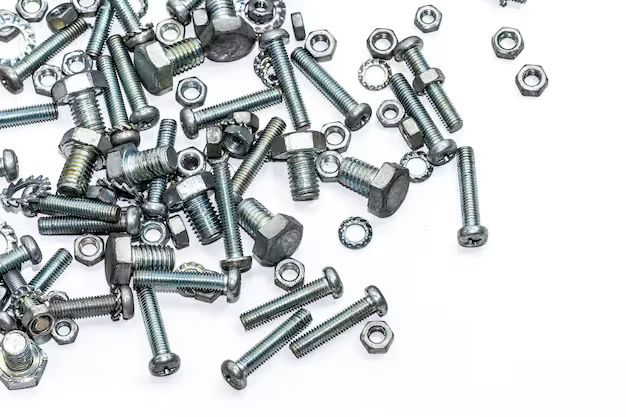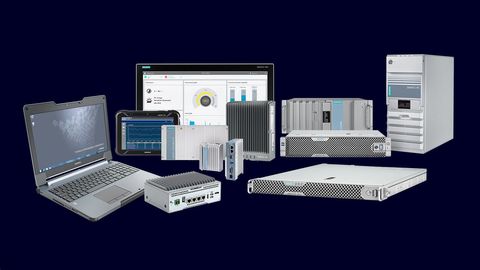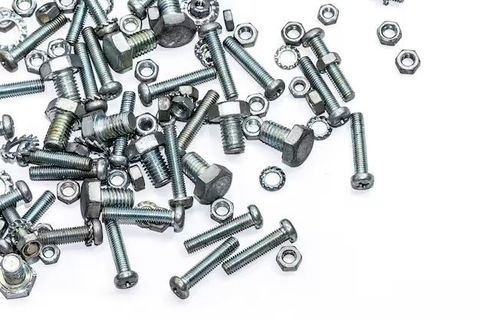A Complete Guide to Screw and Bolt Suppliers: Learn Essential Details and Useful Tips
Screws and bolts are essential fastening components used across industries from construction and automotive to electronics and manufacturing. The market for screw and bolt suppliers has expanded globally, driven by industrial growth, advanced materials, and the need for precise engineering.
A screw and bolt supplier provides a wide range of fasteners designed for various applications, including stainless steel, titanium, brass, and alloy steel types. These suppliers cater to businesses that prioritize strength, corrosion resistance, and design precision.
The existence of this sector ensures a steady and standardized supply of fastening materials crucial for infrastructure, machinery, and assembly operations. As industrial projects become more complex, the demand for specialized fasteners with higher performance characteristics continues to rise.
Why Screw and Bolt Suppliers Matter Today
Screw and bolt suppliers play an integral role in global manufacturing and construction. Every industry relies on reliable fasteners to ensure structural integrity and safety. Their importance lies in several key areas:
-
Industrial Dependence: Fasteners are fundamental to production processes in construction, energy, aerospace, and electronics.
-
Product Safety and Durability: Quality screws and bolts prevent structural failures and enhance operational reliability.
-
Innovation in Materials: New fasteners are designed for high-stress environments, such as offshore platforms or electric vehicle assemblies.
-
Sustainability Efforts: Many suppliers now produce eco-friendly fasteners using recycled metals and energy-efficient manufacturing.
In recent years, industries have moved towards standardization and certification-based quality control. This shift helps ensure uniformity and reliability across global supply chains. For example, ISO 898 and ASTM standards define tensile strength and mechanical properties, guiding manufacturers and suppliers alike.
Recent Industry Updates and Trends
The screw and bolt market has experienced steady modernization over the past few years. As of 2024–2025, several developments stand out:
-
Digital Supply Platforms: Many suppliers have adopted digital inventory systems and e-catalogs for streamlined procurement.
-
Sustainable Manufacturing: According to a 2024 Fastener Industry Report, over 40% of suppliers are investing in carbon-neutral production.
-
3D Printing of Fasteners: Additive manufacturing is emerging as a cost-efficient solution for custom or prototype bolts and screws.
-
Smart Fasteners: IoT-based fasteners with embedded sensors are being developed to monitor vibration, tension, and fatigue.
-
Regional Growth: Asia-Pacific remains the fastest-growing market, driven by industrial expansion in India, China, and South Korea.
The global fastener market was valued at approximately USD 98 billion in 2024, with an expected annual growth rate of around 4.5% through 2030. This growth is attributed to infrastructure development, automotive production, and the shift towards lightweight materials like aluminum and titanium.
| Year | Market Value (USD Billion) | Growth Trend |
|---|---|---|
| 2022 | 91 | Moderate |
| 2024 | 98 | Rising |
| 2030 | 126 (Forecast) | Strong |
Regulatory Standards and Industry Policies
The screw and bolt industry operates under strict regulatory standards to ensure safety, consistency, and quality. These standards vary by country but follow a similar framework emphasizing mechanical performance and corrosion resistance.
Common Standards and Policies Include:
-
ISO Standards (Global): ISO 898, ISO 965, and ISO 3506 define material grades, tolerance, and testing requirements.
-
ASTM Standards (U.S.): ASTM A193 and A307 outline mechanical and chemical properties of fasteners used in pressure vessels and general construction.
-
DIN and EN Standards (Europe): Regulate dimensions, mechanical performance, and surface coatings.
-
BIS Standards (India): IS 1367 and IS 3757 cover bolts, nuts, and washers for industrial applications.
Governments often require certified fasteners for infrastructure or defense projects. In India, the Bureau of Indian Standards (BIS) certification ensures adherence to safety and reliability requirements. Similarly, the U.S. Federal Highway Administration (FHWA) enforces specifications for bolts used in bridges and roadways.
These rules not only enhance product reliability but also support fair trade and global interoperability among suppliers.
Tools and Resources for Learning and Selection
For engineers, buyers, and manufacturers, selecting the right screw and bolt supplier requires understanding material properties, application requirements, and certifications. A number of digital and analytical tools can help streamline decision-making.
Helpful Tools and Resources:
-
Fastener Design Calculator: Online tools like Engineer’s Edge Fastener Calculator estimate torque, tension, and load values.
-
Material Comparison Platforms: Matmatch and Granta EduPack provide data on strength and corrosion resistance.
-
Specification Databases: Fastenal Tech Data Sheets or McMaster-Carr catalogs include dimensions, grades, and performance data.
-
3D Modeling Libraries: CAD platforms such as GrabCAD or TraceParts offer fastener models for design testing.
-
Global Supplier Directories: ThomasNet and Alibaba Industrial allow users to explore certified fastener suppliers by region or material type.
These resources empower businesses to evaluate suppliers based on quality, sustainability, and technical compliance rather than price alone.
Common Questions About Screw and Bolt Suppliers
1. What is the main difference between a screw and a bolt?
A screw is typically used with a threaded hole or material, while a bolt requires a nut to fasten components together. Bolts generally handle higher loads and are used in structural applications.
2. How can I identify high-quality fasteners?
Look for fasteners with certifications such as ISO 9001, BIS, or ASTM compliance. Material composition, surface finish, and tensile strength ratings also indicate quality.
3. What materials are most commonly used by screw and bolt suppliers?
Suppliers commonly use stainless steel, alloy steel, titanium, brass, and nylon, depending on the required strength, corrosion resistance, and weight.
4. Are there eco-friendly fastener options available?
Yes. Many suppliers now manufacture eco-friendly fasteners using recycled metals and low-emission coatings to meet sustainability goals.
5. How has technology changed the fastener industry?
Automation, 3D printing, and IoT-enabled smart fasteners have enhanced manufacturing precision and reduced waste, transforming how fasteners are designed and monitored in real-time applications.
Insights and Practical Tips for Choosing a Supplier
Selecting the right supplier involves more than checking product lists. It requires evaluating experience, certification, and customer reliability. Consider the following tips:
-
Verify Standards Compliance: Choose suppliers who adhere to ISO, ASTM, or BIS standards.
-
Evaluate Material Expertise: Ensure the supplier offers materials suitable for your environment—such as corrosion-resistant grades for marine use.
-
Review Technical Support: Suppliers with in-house testing and engineering support provide added assurance of quality.
-
Check Global Reach and Logistics: For large-scale projects, choose suppliers with global shipping networks and inventory management systems.
-
Sustainability Commitment: Support suppliers with eco-friendly manufacturing and waste reduction practices.
| Evaluation Criteria | Description | Importance |
|---|---|---|
| Certification | ISO/BIS/ASTM compliance | High |
| Material Range | Stainless, alloy, brass | Medium |
| Technical Support | Design and testing help | High |
| Delivery Speed | Timely global logistics | Medium |
| Sustainability | Green manufacturing | High |
Conclusion
Screw and bolt suppliers form the foundation of modern engineering and construction. They ensure reliability, structural safety, and innovation in fastener design. Understanding the role of materials, global standards, and technological trends helps industries and individuals make informed decisions.
From sustainable production to smart monitoring systems, the fastener industry is evolving rapidly, ensuring stronger, safer, and more efficient connections across the world. Whether you are an engineer, manufacturer, or technical enthusiast, knowing how to evaluate and choose the right supplier is essential to achieving quality, precision, and long-term reliability.





